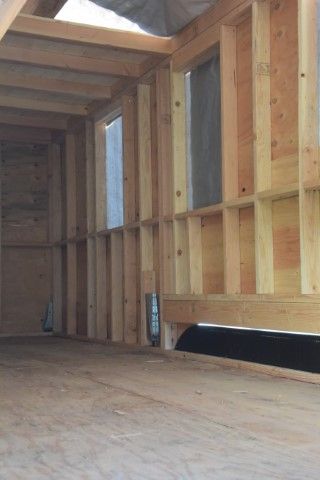
A new house-building project at a local high school for Incarcerated youth has the troubled teens learning new career skills while also taking pride in their work.
Tagged as the “tiny house movement,” the program aims at “laying the foundation for big lessons” at a detention facility for youth aged 15 to 18 years old in Morgan Hill, according to statements from Santa Clara County Office of Education officials.
Since January, about 40 incarcerated students in the Blue Ridge High School program—which operates through the SCCOE’s Alternative Education Department—began building their first tiny house during Career and Technical Education (CTE) classes.
“I think the thing that I find most rewarding is watching the students enjoy building something,” CTE teacher Ralph Wigginton said.
Wigginton and fellow CTE teacher Marty Bajda have been leading the construction project of a 176-square-foot house, through materials and floor plans purchased by Sonoma-based Tumbleweed Tiny House Company.
Once complete, the house will include a bathroom, bedroom, great room with a sink and stove, and queen-size sleeping loft within a two-story self-contained unit, all placed atop a trailer.
“It turns out a lot of these kids have never built anything before,” Wigginton said. “That’s a life experience to say, ‘I put this together.’”
The Blue Ridge program is located at William F. James Boys Ranch in northeast Morgan Hill, where the minors have been committed for six to 12 months due to their involvement in juvenile delinquency. They are assigned to pods that rotate through different classrooms, including Wigginton’s, throughout the day.
“The tiny house project is not exclusive to the CTE classrooms, but has expanded and blossomed in all classes, especially math and science,” Principal Tara Strong said. “The students are using their math and science skills in measurement, slope and roof design, and expanding their understanding of energy and environmental issues.
Student Saul said the project has been fun for many reasons, including learning the different tools and seeing the house’s progress.
“It looks pretty cool, starting from a simple piece of wood like that to something like this,” he said, pointing to the second story they recently completed framing. Once that part of the build is assembled, Wigginton said it will be forklifted atop the completed first story.
On Monday, March 14, Wigginton started the class by having a group of five students load, power and use nail guns in order to put the rafters on the bridge beam for the second story of the house.
“I noticed when we first started using the nail gun how they were so afraid to use them, because it does buck a little bit when the shots go off,” Bajda said. “Now they can go in there, just like any carpenter.”
Things don’t always go smoothly, but Wigginton was able to turn a nail gun jam that day into a teachable moment for his students.
“It is important to encourage them to not make mistakes, but learn from their mistakes,” Paraeducator Sally Casas, who was helping out that day, said of the growth she has seen since the project started. “This is all a learning experience, like you saw when the gun got jammed because somebody put the nails in the wrong direction. It’s not a big deal. You just correct it and keep moving forward.”
They are scheduled to complete the 24-foot cypress horizon floor plan before Labor Day on Sept. 5. Students are tracking their progress with pictures and a blog on a website, which math teacher Anne Le manages.
“My wish for them is to see the end result and enjoy the fruits of their labor, because I think our kids just don’t get the chance to see that very often in their lifetime,” she said.
There are no plans for where the house will go yet, but Principal Strong said she hopes to donate it to Habitat for Humanity or a similar cause. She is also looking forward to what the future holds, with plans to build two new tiny houses next school year
“I think it’s going to be one of these projects we can build on,” she said. “We don’t want any Blue Ridge student to miss out on an opportunity to discover their potential, develop their character and maximize their learning so they may become self-sufficient, lifelong learners and world-class citizens.”







